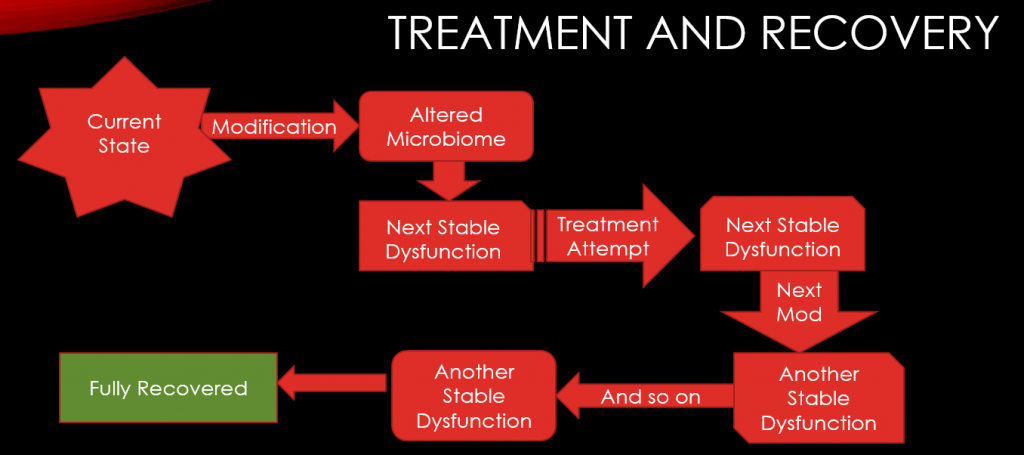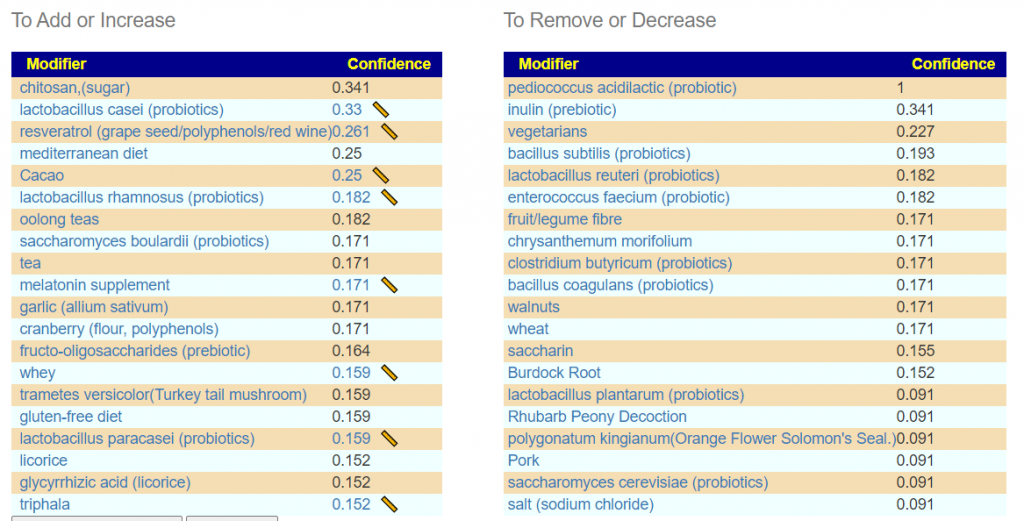A reader had initial success from modifying the microbiome but it did not persist.
The reason I ended up at your website doing research into the connection microbiome and ME/CFS was that firstly I tried Miyarisan and it turned out to be one of the best things I ever tried, MY headaches and brain fog were early completely gone and I had a lot more energy. Unfortunately this wonder only lasted about 6 weeks till I overdid it and crashed and with that crash Miyarisan lost it’s effect on me.
The other thing was Nystatin, which I was given for the candida found in my gut last year and right on from the first pills I took, it gave me more energy ( so I doubt it had anything to to with the candida, but rather must have changed something else in my gut for the better). This lasted about 10 weeks and then pooped out and was not reproducible.
But these two times that I felt I got energy because of some changes in my gut, were very rare in the way the they just generally provided a relief in all symptoms, as I was just overall feeling better and had more energy, but without crashing. Most of the times I have trouble, because I am easily overstimulated and most things that give me energy give me instant fatigue rebound, so Miyarisan and Nystatin really were different and made me try to work on my gut.
She attached her tests and summarized them as “As to my tests, I guess the most notable things are my low TH1(Interferon Gamma), my low glutathione, high TGF beta, my decreased SOD activity.”
Reminder that recovery is a journey
In an earlier youtube review of another ME/CFS patient, I used the graphic below

I used this model for my last flare and can be seen by the list of posts below on CFS Remission. Each report was associated with a new microbiome test and a change of supplements etc to address the changes that the prior changes caused.
I have been busy adding features that exposes more information about the microbiome. We shall see if these feature helps with the analysis.
Pro Formula Analysis
My usual starting point is to pick the low hanging fruit — identify outliers.
Bacteria Outliers
I quickly saw some massively high ones. I will focused on those. Note that Firmicutes is massively overrepresented.

- HIGH Values (some are the highest seen in 2000 samples)
End Products
Only two items were suggested, none available as a supplement (a-Galactosidase , Phosphoamidase)
KEGG Bacteria Products Out of Range
A short list, as above none available as a supplement
KEGG Modules out of Range
Only one item (M00570) Isoleucine biosynthesis, threonine => 2-oxobutanoate => isoleucine
KEGG Enzymes Out of Range
A longer list — all being low. We hope over to KEGG Computed Probiotics and get the following list

Because this person is in Europe, they may be able to get lactobacillus kefiri which is described more in my post of 2017 and sold by online Italian sites. This is a researched probiotic. Also 🛒AOR, Probiotic 3 is a sweet one — all of the researched probiotic species in it, are on the above list. For the bifidobacterium, see Researched Probiotics list for recommended choices.
Predicted Symptoms – Citizen Science
At this point we get some very interesting results. First, the bacteria by themselves do not match any symptoms.

But when we go over to the KEGG components that the bacteria produces, we see the type of predictions that we would expect

Conclusion: She does not have the typical ME/CFS bacteria shifts but she has the typical jacked metabolites imbalance seen in people with ME/CFS. Same crime — different crime family!
Action Plan
At this point, we have identify major items of concern.
Hand Picked Suggestions
I am going to run it two ways — first with the extreme outliers shown above, then including Firmicutes (which I rarely do)

Remember we need to set Precision to the kitchen sink to have Firmicutes included in the calculations for the suggestions


What about the two strange strains?
These bacteria do not ring any bells with me, so over to pubmed.
- Paraprevotella xylaniphila Only items known to explicitly reduce are:
- Bacteroides oleiciplenus the following are known to reduce
Proposed Plan for next cycle
- Rotate every 1-2 weeks the following probiotics
- AOR, Probiotic 3 (Clostridium butyricum TO-A, Bacillus mesentericus TO-A, Enterococcus faecalis T-110)
- Note that Bacillus mesentericus was once classified as Bacillus subtilis. This is a specific strain of it.
- 🛒Kefibios (Lactobacillus Kefiri LKF01)
- Bifidobacterium listed above (many options – you may wish to read the research first)
- AOR, Probiotic 3 (Clostridium butyricum TO-A, Bacillus mesentericus TO-A, Enterococcus faecalis T-110)
Rotate every 2-3 weeks:

- Licorice (I prefer the Italian products — not teas or powders) . Dosage used in clinical studies are 24-32 grams/day

If your physician is willing to prescribe “off-label” also do alternating every two weeks between a PPI and atorvastatin (prescription). PPI is over the counter in some places and includes:
- omeprazole (Prilosec, Prilosec OTC, Zegerid)
- lansoprazole (Prevacid)
- pantoprazole (Protonix)
- rabeprazole (Aciphex)
- esomeprazole (Nexium)
- dexlansoprazole (Dexilant)
For items from the suggestions above, I would suggest going with handpicked suggestion list without firmicutes.
I would suggest an initial retest at 4 weeks or so, a full cycle of a PPI and atorvastatin, at the same time a cycle of alternating licorice and triphala. We want to see if this has caused a downward movement of the two species of concern.
I am a strong advocate on doing alternative pulses. It is what C. Jadin does for antibiotics (changing them every month) and I also have read several modelling studies that found rotation had better success than continuous. The english explanation is simple: for anything you may take — 90% of the bacteria may be killed and 10% survive (resistant). If you keep up with the same, then that 10% slowly regrows as resistant to whatever you are using. Changing between two things that are 90% effective (and different), then it becomes 99% killed and 1% survive.
As you have witnessed, 6 weeks with one item and then the resistors recovered your dysfunction, for another substance it lasted 10 weeks. We want to keep to 2 weeks on and then rotate.
I checked the parent taxa on these two, and I see Carthamus tinctorius L (Safflower) inhibits one of them – so using safflower oil may help. There is no simple parent for the other.
That was this person’s diet ? What was it about their diet contributed to the growth of high levels of Firmicutes ?
High fat diet ? Western diet. Lots of salad dressings and fried food ?